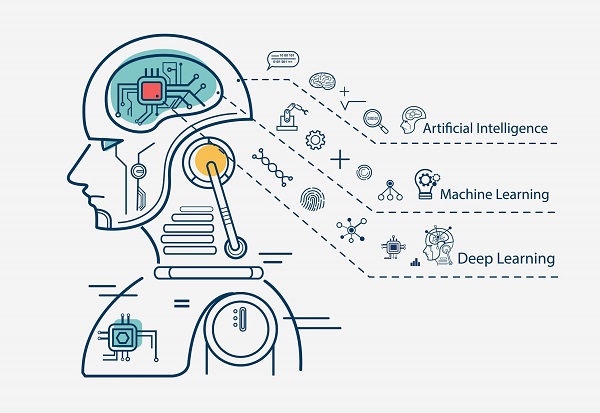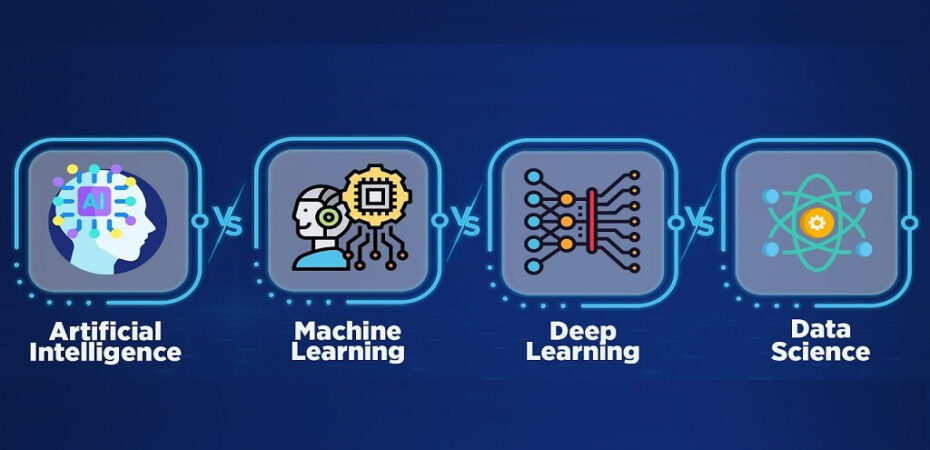In these years, the world has seen a dramatic rise in the use of artificial intelligence (AI) and machine learning (ML) across fields and industries, especially when we are entering the era of digital transformation. Like coming out from sci-fi fiction, these two technologies have made it possible to automate processes that used to be done manually or not at all. They enable computers to learn from experience and data without being specifically programmed for each task.
As stated earlier, AI and machine learning are revolutionizing industries like healthcare, finance, transportation, retailing, and more by making decisions faster than ever before while eliminating as many manual labor costs and human interventions as possible. From self-driving cars to facial recognition technology and natural language processing, man-made intelligence is also transforming how we interact with our environment on an unprecedented scale.
As these technologies continue to evolve rapidly over time, their potential applications will expand even more over time, opening up exciting new possibilities for businesses around the globe. Although neither AI nor ML is a buzzword any longer, most tech outsiders still use these two terms interchangeably. This article hopefully gives you an overview of how artificial intelligence and machine learning differ, but before that, you should go to the definition of each first.
What Is Artificial Intelligence?
Simply put, artificial Intelligence (AI) is the science of teaching computers to do things that normally require human intelligence and intervention. AI-driven systems are capable of learning on their own and can solve tasks better than humans as long as they have been trained with a large dataset. For instance, facial recognition technology or natural language processing (NLP) are two examples of how AI can be used to save time and effort for businesses by automating processes like identity verification or customer service operations. In addition, these systems can also offer better insights when it comes to an understanding complex problems such as healthcare diagnosis and decision-making in finance.
There are four main types of artificial intelligence that you should know if you want to master how to develop AI software:
- Reactive AI: This is the most basic form of AI, where machines can only react to a specific situation based on pre-programmed rules. They do not have the ability to learn or make decisions based on past experiences.
- Limited Memory AI: In this type of AI, machines can use past experiences to influence their decision-making process. Nonetheless, they do not have the ability to retain information over long periods of time.
- Theory of Mind AI: This type of AI has the ability to understand human emotions, beliefs, and intentions. It can predict behavior based on these factors and adjust its actions accordingly.
- Self-Aware AI: This is the most advanced form of artificial intelligence, where machines have consciousness and are able to think and reason like humans. They are capable of understanding their own existence and making decisions based on their own goals and desires.
What Is Machine Learning?

Machine learning (ML) is an application of AI that allows machines to learn from data and detect patterns from it in order to make decisions with little or no human intervention. In other words, ML algorithms allow machines to iteratively learn from the data given without being explicitly programmed for specific tasks. Examples of ML-powered applications include self-driving cars, speech recognition systems, or natural language understanding (NLU).
Like AI, there are different types of machine learning as well:
- Supervised Learning: In this type of ML, algorithms are trained on a labeled dataset where the input data is paired with its corresponding output. The model learns to map inputs to outputs by identifying patterns in the data. When the model is finished with training, it can be utilized to make predictions on new, unseen data.
- Unsupervised Learning: In unsupervised learning, the algorithm is trained on an unlabeled dataset where there are no predefined labels or categories for the data. Instead, the model identifies patterns and relationships in the data on its own. This type of learning is often used for clustering similar data points together or identifying anomalies in a dataset.
- Reinforcement Learning: Reinforcement learning involves training algorithms to make decisions based on feedback received from their environment. The algorithm learns through trial and error by receiving rewards or punishments for certain actions taken in a given situation. The goal is to maximize the reward over time. Examples of reinforcement learning include game-playing and robotics.
How Artificial Intelligence and Machine Learning Differ from Each Other – Comparison
Now that you have grasped some sort of information about each technology, it is now time for the differences between them.
- Definition: AI refers to the machines’ capability to perform tasks that typically require human intelligence and intervention, while ML is a subset of artificial intelligence that involves algorithm training to recognize patterns in data and make predictions based on that data.
- Scope: AI is a broader concept that includes various approaches, such as rule-based systems, expert systems, and machine learning. Machine learning, however, is a specific approach to achieving AI.
- Learning Capability: While both involve learning from data, the way they learn is different. In AI, machines can be programmed with rules or knowledge bases by humans or experts in the field. In contrast, ML algorithms learn from experience by identifying patterns in data without being explicitly programmed.
- Human Intervention: In AI systems, human intervention may be required to update knowledge bases or modify rules when necessary. Whereas ML models can adapt themselves automatically based on new data without requiring human intervention.
- Flexibility: As a result of their flexibility, ML models can be applied across various domains such as image recognition, speech recognition, natural language processing (NLP), recommender systems, etc., while many traditional rule-based systems have limited application areas.
- Performance: While both are used to improve performance in decision-making and predictions, machine learning algorithms are known for their ability to work with large amounts of complex data and provide highly accurate results compared to rule-based systems or expert systems, which can only handle limited sets of pre-defined rules.
To Sum Up This Discussion
The key difference between AI and ML is in their purpose. AI is the science of making machines think like humans and learn from experience. Meanwhile, machine learning is a subset of AI that focuses on using algorithms to process data and give predictions or make decisions without being explicitly programmed to do so. AI attempts to create computer programs that can accurately interpret external contexts, whereas ML uses existing data sets to learn patterns and make decisions. In essence, AI relies on programming rules to understand its environment, while ML looks at trends in data sets in order to draw conclusions or take action without requiring human input. This allows it to improve over time as it learns more.
As such, ML-enabled applications can be trained over time by exposing them to new data sets and expanding their knowledge base. While AI and ML have different purposes, they are closely related in many ways. In fact, ML algorithms are often used by AI applications to make decisions based on the data it has been exposed to. Similarly, AI can be used to create ML algorithms that improve over time as more data is collected and analyzed. Ultimately, understanding the differences between machine learning and artificial intelligence can help businesses make informed decisions on how they should incorporate these technologies into their operations.
As technology continues to evolve rapidly, leveraging the right combination of both AI and ML tools may prove crucial in ensuring a competitive edge in today’s fast-paced digital environment. By understanding how each technology works, businesses will be able to use them effectively for their benefit.
Read also:
- Emerging Technologies in SEO 2022
- How Any Brand Or Company Can Utilize AI in 2022
- The Virtual Data Room Technology – How to Use It and Why
- Extracting Data By Using Web Scraping: How It Works
- 8 Things to Consider Before Launching a Fintech Startup
- What Do The Best IT Consulting Companies Have In Common
- How To Choose The Best IT Consulting Company

